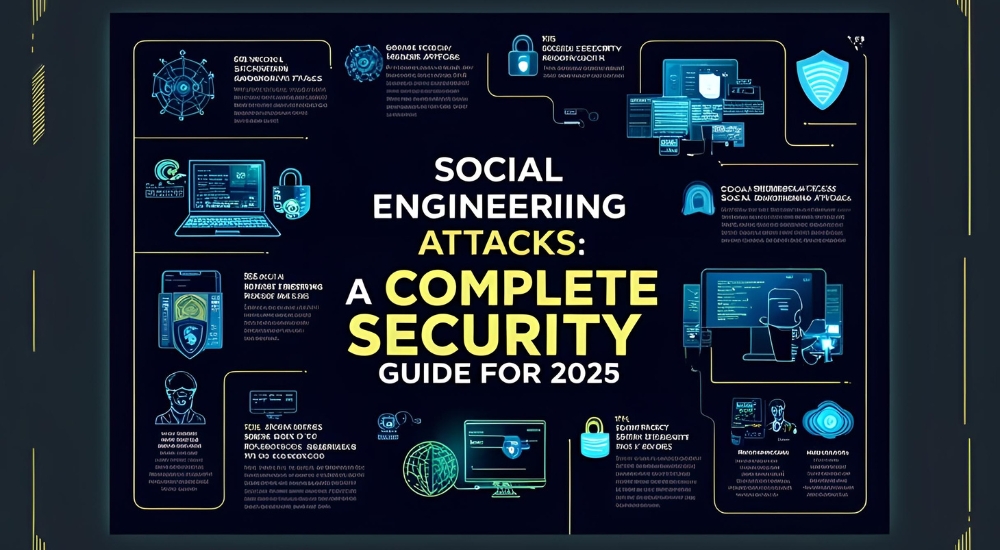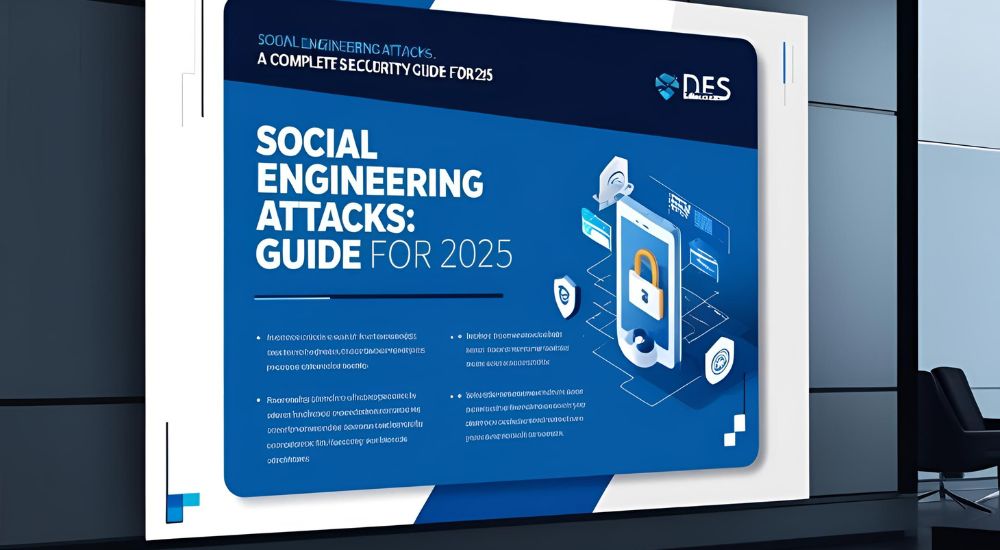Introduction to Social Engineering Attacks
In today’s digital-first world, cybersecurity threats are becoming more advanced, and one of the most deceptive and dangerous threats is social engineering. Unlike traditional hacking, which targets technical vulnerabilities, social engineering attacks exploit human psychology—our trust, emotions, and instincts—to manipulate individuals into revealing sensitive information or performing actions that compromise security.
As we step into 2025, cybercriminals are using more sophisticated AI-driven attacks, deepfake technology, and psychological profiling to create highly convincing scams. This guide will provide you with a comprehensive understanding of social engineering attacks, latest trends, real-world examples, prevention strategies to help you stay informed and secure.

What is Social Engineering? The 2025 Definition
Social engineering is a cyberattack strategy that manipulates individuals into divulging confidential information, accessing restricted systems, or performing unauthorized actions. These attacks rely on deception rather than exploiting software vulnerabilities.
In 2025, social engineering has evolved with:
- AI-driven phishing campaigns that adapt in real-time.
- Deepfake impersonation scams mimicking voices and facial expressions.
- Behavioral analytics manipulation, where attackers predict user actions.
- Automated chatbots engaging in malicious social interactions.
Attackers use a combination of psychological manipulation, technology, and social data mining to increase the success rate of their attacks.
Types of Social Engineering Attacks in 2025
Understanding different social engineering methods is crucial for recognizing and preventing them. Here are the most advanced forms of attacks in 2025:

1. Phishing Attacks: The Ever-Present Threat
Phishing is the most common form of social technology. Attackers send fake emails, messages, or websites designed to steal personal information.
- Spear Phishing: Hyper-personalized phishing targeting specific individuals.
- AI-Powered Phishing: Uses AI to generate adaptive, persuasive messages.
- Voice Phishing (Vishing): AI-generated calls that mimic real people.
- SMiShing: SMS-based phishing that tricks users into clicking malicious links.
2. Pretexting: Building a Web of Deception
Pretexting involves crafting a fake identity or scenario to gain trust. Cybercriminals may pose as:
- IT support agents requesting access to internal systems.
- HR representatives asking for payroll data.
- Government officials demanding tax information.
3. Baiting Attacks: Exploiting Curiosity and Greed
Baiting lures victims into downloading malware or revealing credentials through:
- Fake QR codes leading to phishing websites.
- Malicious USB drops disguised as promotional giveaways.
- Bogus free software downloads infected with spyware.
4. Tailgating & Piggybacking: Physical Intrusions
Attackers exploit human politeness to gain unauthorized physical access.
- Following employees into secure areas without proper authentication.
- Pretending to be delivery personnel to enter offices.
- Exploiting biometric authentication flaws to bypass security.
5. Quid Pro Quo: The Trade-Off Scam
Cybercriminals offer something valuable in return for sensitive data.
- “Free” security software in exchange for login credentials.
- Fake IT technicians providing help but stealing data.
- Online surveys promising cash rewards but harvesting personal data.
The Psychology Behind Social Engineering Attacks
Social engineering relies on psychological triggers to manipulate victims:
1. Authority & Trust:
Attackers pose as figures of authority (CEOs, law enforcement, tech support) to coerce victims into compliance.
2. Urgency & Fear:
Creating artificial pressure (e.g., “Your account will be suspended”) forces victims to act quickly without thinking.
3. Familiarity & Personalization:
Using personal information from social media, attackers make interactions seem credible.
4. Reciprocity:
Victims feel obliged to return a favor (e.g., “Take this survey, get a gift card!”).
In 2025, attackers analyze emotional states in real-time using AI, making their scams more effective.
Real-World Social Engineering Attack Case Studies (2025)
1. AI Deepfake CEO Fraud ($2M Loss)
A finance firm lost $2 million after attackers used a deepfake video call of the CEO to authorize a fraudulent wire transfer.
2. QR Code Phishing at a Coffee Chain
Hundreds of users were tricked into scanning fake QR codes that stole login credentials.
3. AI-Powered Phishing Breach in Healthcare
A hospital’s patient records were stolen after cybercriminals used AI to craft ultra-realistic phishing emails.
How to Prevent Social Engineering Attacks: 2025 Guide

1. Implement Cybersecurity Awareness Training
Regular employee training programs are the best defense against social engineering. Gamified cybersecurity training is gaining popularity in 2025.
2. Use Multi-Factor Authentication (MFA)
MFA ensures that even if passwords are compromised, accounts remain secure.
3. Deploy AI-Powered Email Filtering Solutions
Advanced machine learning-based spam filters detect phishing attempts before they reach inboxes.
4. Verify Identity Before Sharing Information
Use official channels to confirm requests for sensitive information.
5. Keep Systems & Software Updated
Regular patching protects against security loopholes exploited in social engineering attacks.
6. Monitor Behavioral Anomalies
AI-driven security analytics can detect unusual behaviors, like logins from suspicious locations.
The Role of AI in Social Engineering: A Double-Edged Sword
AI is being used by both cybercriminals and security experts:
How Cybercriminals Use AI:
- Deepfake fraud to impersonate executives.
- Automated phishing campaigns with real-time learning capabilities.
- AI-generated fake customer service chats to steal login data.
How AI Helps Prevent Attacks:
- AI-powered anomaly detection in financial transactions.
- Voice authentication to detect deepfake audio scams.
- Real-time behavioral threat analysis to prevent phishing.
Conclusion: Stay Vigilant Against Social Engineering in 2025
Social engineering is evolving rapidly, with cybercriminals leveraging AI, deepfakes, and behavioral analytics to manipulate victims. Staying informed, adopting best practices, and using AI-powered security solutions can help individuals and businesses stay protected.
Awareness, verification, and security training remain the most effective tools in the fight against social engineering attacks.
Stay alert. Stay informed. Stay safe in 2025 and beyond.
One thought on “Social Engineering Attacks: A Complete Security Guide for 2025”